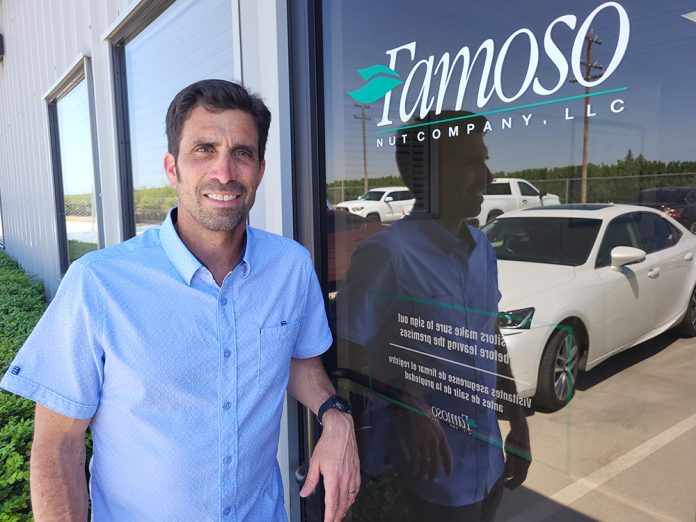When Famoso Nut Company CEO Chad DeRose answered the phone before dawn on March 11, he didn’t expect it to be good news. It wasn’t.
The call informed DeRose that the surging waters of Poso Creek had broken around a weir located next to Famoso Nut’s main processing site. The plant sits about 20 miles north of Bakersfield.
Like many of California’s normally dry rivers and streams, Poso Creek was awash with water after winter storms brought record rain and snow to the state. Now, a sudden snowmelt was sending torrents of water cascading down mountain ravines and into creeks and rivers, bringing debris and mud flows with them.
By the time DeRose arrived at Famoso Nut, Poso Creek was flooding through 15 acres of the almond handler’s 120-acre property on Famoso-Woody Road.
It was a new experience for DeRose, who’s been CEO at Famoso Nut since 2018. The company, which handles up to 50 million pounds of almonds a year, also operates a second facility on Kite Road, about five miles away. Fortunately, that site wasn’t flooded.
In mid-April, DeRose spoke to West Coast Nut about the impact of the flooding on Famoso Nut’s main plant and how 2023 is shaping up for the company and California’s almond industry.
Q. Explain how Famoso Nut came to be flooded.
Poso Creek drains from the southern Sierras and runs south of our property. It hadn’t run in probably eight years. Next to Famoso Nut is Cawelo Water District, which had built a weir to divert water into its settling ponds. The atmospheric river that came through on March 10 dropped so much rain on top of the low snow that the creek was slammed. Debris came washing down from the mountains and plugged the weir. There was at least a 100-yard backlog of trees and branches. It was incredible how much came down. There was no way Cawelo could have been ready for that amount of debris. They weren’t able to clear the weir, and it forced the water into the settling pounds. Then it flowed into our property just across the fence line.
Q. Was your whole property flooded?
The plant and office are physically located up higher, so they were fine. Where we’ve got our auger line and hull piles, it’s a lower area. It was this lower area that took the brunt. The water rose to almost six feet high around the hull piles. It was a river running through. It made a big mess. It flooded our sump and brought a lot of silt onto our property.
Q. What was your biggest concern at that point?
The big danger with water and hulls is the possibility the piles will combust and catch on fire. That’s not completely uncommon in the industry. We had to break down all the hull piles, move them to higher, drier ground, and salvage as much of the good product as we possibly could.
Q. How did you get the water out of there?
We had to wait for the water level to drop. It was probably two days that the water was flowing through our property. We had to attack the hulls from the high side because there was so much silt and mud left over. We worked from east to west and got to the dry layer, then we started digging. Fortunately, our neighbor down the road, Sun-Gro Commodities, had two large bucket-holders we were able to bring onsite. We had four loaders running 10 to 12 hours a day moving the hulls to dry land.
Q. What did you do with the hulls that had been under water?
We’re in the process of finding open ground to put them on. Then they’ll disk them in and use that as compost.
Q. What’s the extent of the damage to Famoso Nut?
It’s probably around $2 million. We’re still working through the numbers. We’ve been able to salvage a lot of the value. Hull prices had hit record pricing, so the value of those hulls was pretty high. Fortunately, we have insurance coverage on the hulls, and there should be some emergency disaster funding that will be available as well.
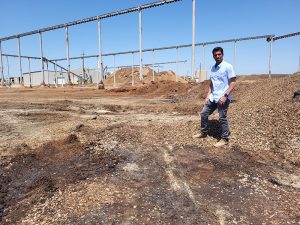
Q. Where did all the water go after flooding your property?
It went through our property, into a vineyard across the street and back into Poso Creek at a lower point. It just took a little detour.
Q. Apart from the flood, what kind of year is 2023 shaping up to be for Famoso Nut?
Every year has its own challenges. The timing of the cold weather and rains coincided with almond bloom. That will likely have a big impact on the production we’ll be seeing this year. The one positive with the lower crop is that it will give us the opportunity, I hope, to clear the large carryout from last year and see prices rise.
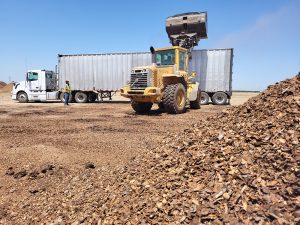
Q. What other challenges are you facing?
Some of the biggest are trade and regulatory issues. Being an exporter, you’re exposed to geo-political tensions and regulatory changes. Western Europe, for example, is very focused on climate aspects and is constantly changing regulations regarding pesticide residues. One of the difficulties in dealing with an export commodity is that every country has different regulations. You’re trying to comply with them, and it’s always a moving target.
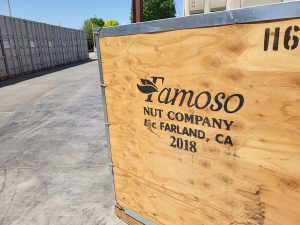
The other challenge is the well-documented tariffs. California is the biggest almond supplier in the world. But you have other almond-producing regions like Australia, which has been able to work out trade pacts with places like India and China. We used to have a much heavier influence in China than we do now. The duty for U.S. almonds into China is 25%. Australia is 0%. So, Australia raises its prices 24%, and they get the business. It puts California at a competitive disadvantage. China is a market the California almond industry developed over time, so it doesn’t feel good to be priced out.
Q. What about on the home front?
It’s a very difficult time for growers. The 2022 crop year was very difficult with all of the inflationary pressures put on growers. They’re being forced to cut their costs, be it missing sprays or reducing winter sanitation work. That’s going to be reflected in the quality. It puts more cost on the processing side from a quality aspect.
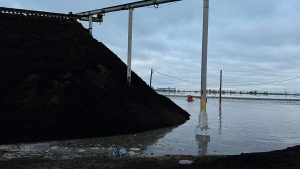
Q. What are your priorities for the coming year?
We want to make sure we’ve got a really good read on what we’re going to be handling from a crop standpoint. We’re talking to growers and getting good estimates so we can form a good marketing plan. At the end of the day, we’re trying to get the growers as much money back in their pockets as possible. So, for us, a lot of it is finding ways to cut costs while at the same time improving our quality. I don’t know if our priorities are dramatically different this year from other years. We’ve got a good system going, so it’s making sure we constantly have our eyes on the ball so we’re not getting overly distracted, because it’s been easy to get distracted over the last two years.







